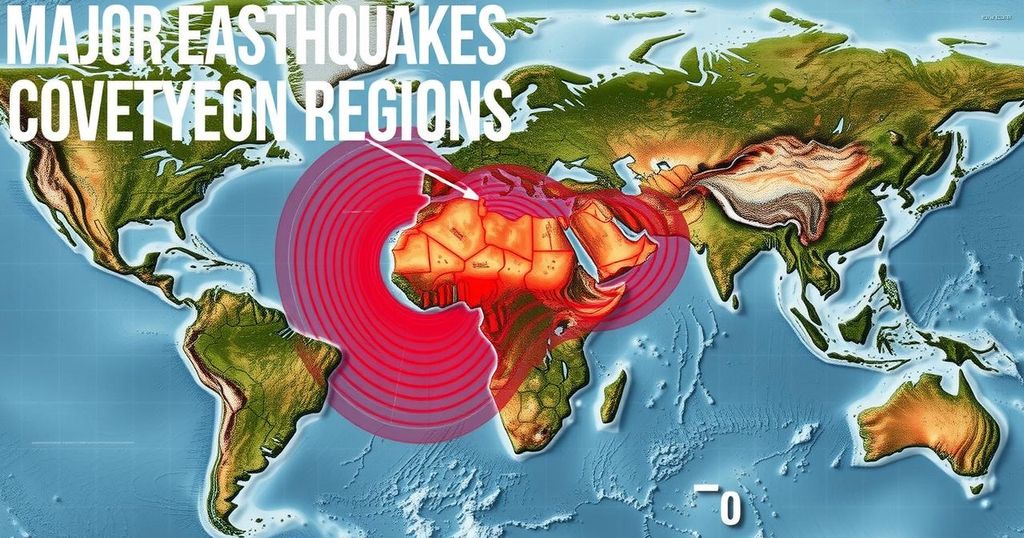On January 2, a 6.1-magnitude earthquake struck Chile’s Calama region. This followed a 4.7-magnitude quake in California and other significant tremors across the Pacific, emphasizing the ongoing seismic activity in these regions. The data provided by the USGS indicates a troubling pattern of increased earthquake occurrences in recent days.
On January 2, a significant seismic event measuring 6.1 on the Richter scale was recorded in Chile, as reported by the United States Geological Survey (USGS). The epicenter was identified in the region of Calama, situated at a depth of approximately 99 kilometers (61.5 miles). At the time of this report, the USGS had received 25 accounts from individuals who felt the tremor. This event followed a 4.7-magnitude earthquake that occurred in California on January 1, centered in Cobb, with a much shallower depth of 1.1 kilometers (0.7 miles).
Prior to the Californian earthquake, Alaska experienced a 3.3-magnitude quake on December 30, centered in Nikolski at a depth of 39.5 kilometers (25 miles). Notably, this Alaska event transpired shortly after a further 3.3-magnitude earthquake was recorded in Fort Bidwell, California, at a depth of 3.4 kilometers (2.1 miles). Additionally, the Fort Bidwell quake followed a 6.7-magnitude earthquake that impacted the Kuril Islands on December 27, located at a considerable depth of 162.6 kilometers (101 miles).
The Kuril Islands earthquake was, in turn, preceded by a 3.6-magnitude tremor in McCarthy, Alaska, on December 26, which occurred at a depth of 8.1 kilometers (five miles). This series of seismic activities is further connected to a 3.0-magnitude earthquake in Clayton, California, on December 25, at a depth of 13.2 kilometers (8.2 miles). The seismic sequence is noteworthy, culminating with a 5.9-magnitude earthquake that struck Guisa, Cuba, on December 23, measured at a depth of 22.2 kilometers (13.8 miles).
Earthquakes, being geological phenomena caused by the shifting of tectonic plates, frequently affect various regions globally, resulting in varying magnitudes and depths. The United States Geological Survey closely monitors seismic activities, providing critical data on the earth’s shifts. These recent seismic events, concentrated around the Pacific Ring of Fire, illustrate the region’s heightened earthquake activity. As earthquakes can lead to significant consequences, understanding their occurrences is essential for preparedness and safety.
In conclusion, the recent series of earthquakes across different regions, including Chile, California, Alaska, and Cuba, highlights the ongoing seismic activities prevalent in tectonically active areas. The range of magnitudes and depths emphasizes the dynamic nature of the earth’s crust and the importance of vigilance in monitoring these events. Such awareness positively contributes to preparedness and mitigates potential risks associated with seismic incidents.
Original Source: www.wwnc.com






